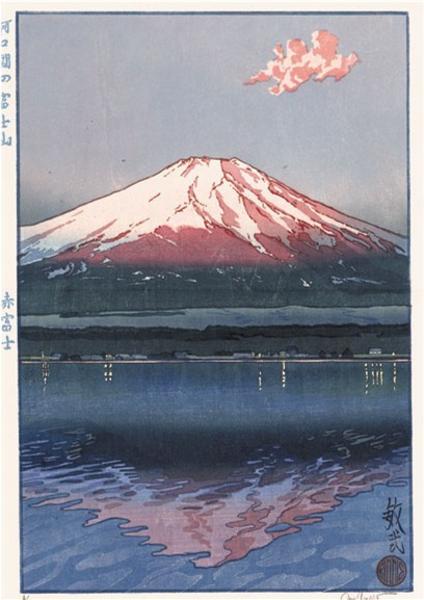| | |
| Artist: | Binnie Paul (1967- ) |
| Title: | Red Fuji |
| Series: | |
| Date of first edition?: | Not set |
| Publisher (first edition)?: | Self |
| Publisher (this edition)?: | Self |
| Medium (first edition): | Woodblock |
| Medium (this edition): | Woodblock |
| Format (first edition): | Not Set
|
| Format (this edition): | Not Set |
| DB artwork code: | 33310 |
| Notes (first edition)?: |
|
| Notes (this edition)?: |
| The following information was taken from the original web listing of this artwork. Note that there may be some inaccuracies:
This is, in my estimation, the most beautiful print ever from the hand of contemporary printmaker Paul Binnie. The print is entitled Akafuji (Red Fuji), an homage both to the early landscape prints of Hokusai and the shin hanga masterpieces of Yoshida and Hasui. Akafuji will not be released to the general public until after the first of the year (assuming that there are any left of the edition of 100 at that time). For the first buyers, including the buyer of this print, Mr. Binnie has included a small surimono woodblock printed bookplate (ex libris) as a special gift. Akafuji measures approximately 15 x 10" plus margins. It is pencil signed and numbered 7/100. Color and impression are superb; condition is impeccable. Destined to be a sought-after classic example of Japanese printmaking!
|
|
| Artist Bio: |
Paul Binnie was born at Airthrey Castle, Scotland in 1967 and lived in Alloa, Central Scotland until 1985. He then attended Edinburgh University and Edinburgh College of Art, taking his MA (Fine Art) in 1990. From then until the spring of 1993 he lived in Paris where he worked mostly in oils and watercolours, painting figure subjects and occasional landscapes. He began to collect Japanese Woodblock Prints in the late 1980s on a summer trip to Paris, and his extended stay in France allowed him to expand his collection and his knowledge of the subject. It was this interest in Japanese Prints along with a desire to understand the methods of their production that prompted him to move in March 1993 to Tokyo. He there sought training in the techniques of block print-making. Unable to enter the Yoshida studio, his first choice for training, due to the illness of Yoshida Toshi, he was advised to contact Seki Kenji. Kenji had been the head printer at Doi-Hangaten and Binnie worked with him for several years developing his own block printing style.
|
|


